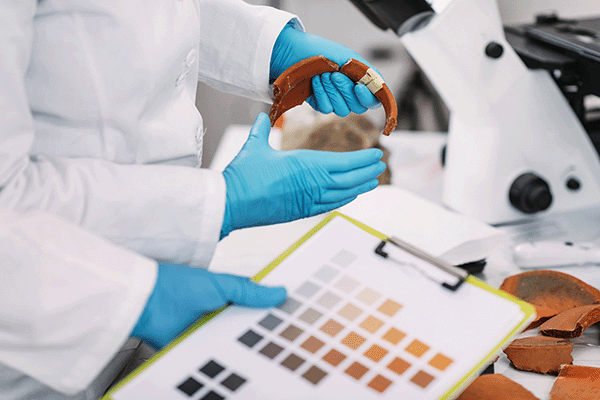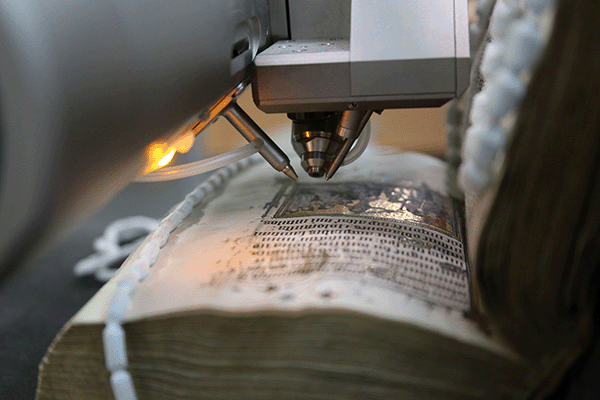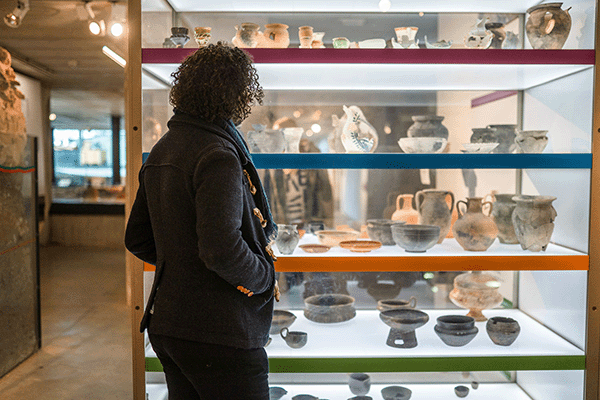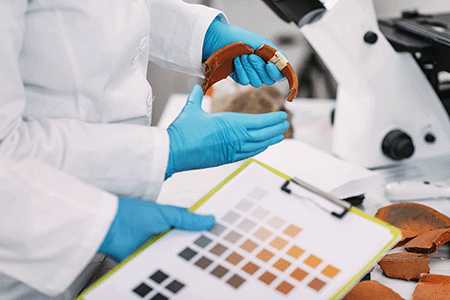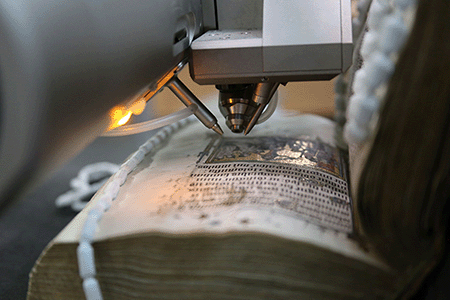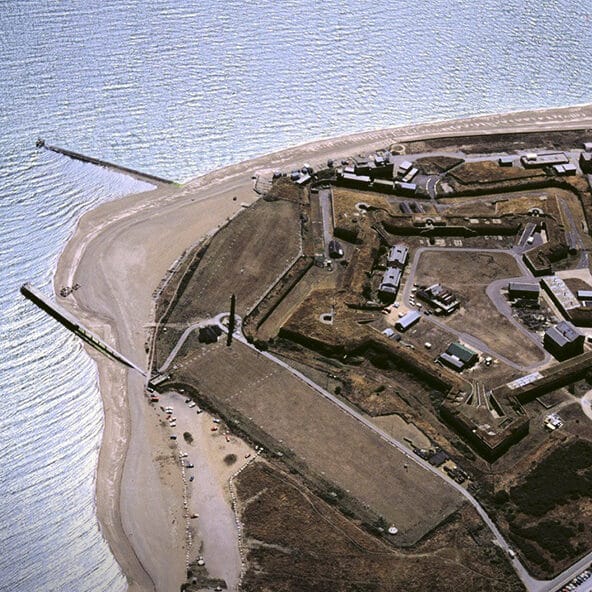Historic England’s Fort Cumberland Laboratories in Portsmouth officially reopens today (Tuesday 10 June 2025) following a major year-long refurbishment, unveiling a cutting-edge facility dedicated to advancing the study and preservation of the historic environment.
For over 75 years, the science facility at Fort Cumberland has played a pivotal role in uncovering and safeguarding England’s heritage. Its archaeologists and heritage scientists have contributed to landmark projects such as the re‑excavation of Silbury Hill, conservation of artefacts from the 18th‑century Dutch warship Rooswijk, and the analysis of human skeletal remains from Birdoswald Roman Fort Cemetery on Hadrian’s Wall.
Housing nationally important reference collections and advanced analytical equipment, the laboratories are staffed by a team of heritage scientists who provide bespoke advice and services to the sector. They also produce internationally recognised best practice guidance that supports conservation and research across the UK.
Transforming heritage science
The facility has been transformed through extensive renovations, including reconfigured lab spaces, new flooring, heating and cooling systems, and significant equipment upgrades. The improvements were made possible through funding from the Research Infrastructure for Conservation and Heritage Science (RICHeS) programme as part of the Arts and Humanities Research Council (AHRC) and Historic England.
One of the centrepieces of the upgrade is a new scanning electron microscope with energy dispersive spectrometry (SEM-EDS), which allows researchers to analyse historic materials at microscopic and chemical levels. This technology helps reveal how objects were made, assess their condition and develop preservation strategies. The SEM-EDS allows imaging of very small features, such as nanocrystals, and maps the chemical composition of a wide range of materials. It will support research into dental wear in archaeological remains, the causes of bone discolouration and butchering marks, identification of wood, fibres, insect and plant remains, and the analysis of historic building materials.
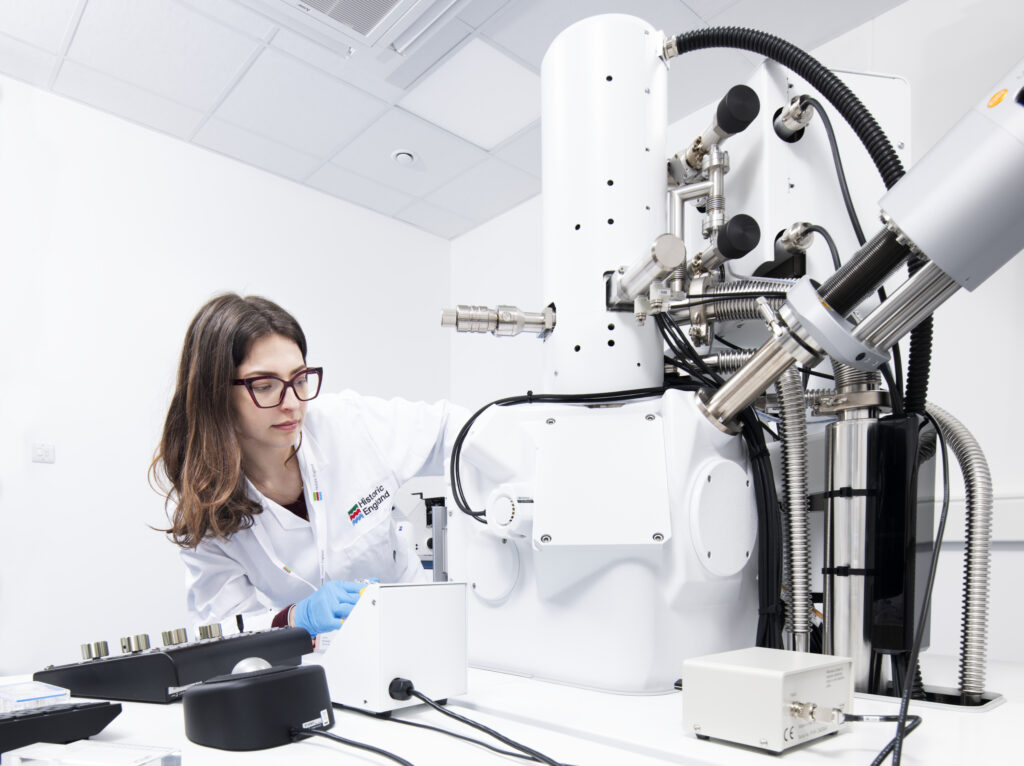
It is especially valuable for examining surface layers to understand degradation, such as investigating why the painted surfaces of the Crystal Palace Park Dinosaurs were deteriorating. It will also be used to evaluate how coatings respond to environmental changes and help develop more sustainable materials by informing treatment strategies for a wide range of artefacts and building materials, particularly in collaboration with the English Heritage Trust to better protect the National Collection. Crucially, the new system supports remote access, enabling researchers from across the UK (and potentially international) to benefit from Fort Cumberland’s capabilities without needing to travel. This not only widens access and facilitates collaboration but also supports Historic England’s Net Zero goals by reducing carbon emissions.
Further improvements include enhanced storage and curatorial facilities that expand access to Fort Cumberland’s unique biocultural collections. These support both academic research and student training, including projects like From Feed the Birds to Do Not Feed the Animals which investigates historical human and animal relationships.
Creating a national distributed heritage science network
RICHeS is the UK’s Research Infrastructure for Conservation and Heritage Science and it is best described as a distributed research infrastructure. Rather than relying on a single central facility, RICHeS operates as a national network, connecting researchers to a range of heritage science services, equipment and collections located across the UK.
As part of this network, Fort Cumberland serves as the Heritage Science Collections Hub: South (HSCH:S) and is working in close partnership with the Ark of the North at the University of Aberdeen, and SHEFF BIOARCH at the University of Sheffield. Together, these institutions form a coordinated, UK-wide network of collection hubs that ensure heritage science resources are findable, accessible and shareable across all regions.
This distributed network enhances collaboration, drives innovation, and increases equity of access to heritage science infrastructure, supporting more diverse participation and enabling efficient, sustainable research. It also helps to integrate Fort Cumberland’s capabilities into a broader ecosystem, amplifying its role as a national hub for conservation, research and training.
Professor Christopher Smith, Executive Chair of the Arts and Humanities Research Council, said:
“The adoption of new technology and practice is critical to ensuring that we preserve and learn from our extraordinarily rich heritage. That’s the ethos behind the RICHeS programme and I’m excited to see the work that will be done by the team at Fort Cumberland as a result of this funding.”
Duncan Wilson, Chief Executive of Historic England said:
“The amazing work of our archaeologists and heritage scientists is helping to uncover the hidden stories that connect us to our distant past. This new investment in Fort Cumberland’s laboratories will enhance our research and conservation work and improve access to our expertise, equipment and collections, helping more people to enjoy and care for their heritage.”

